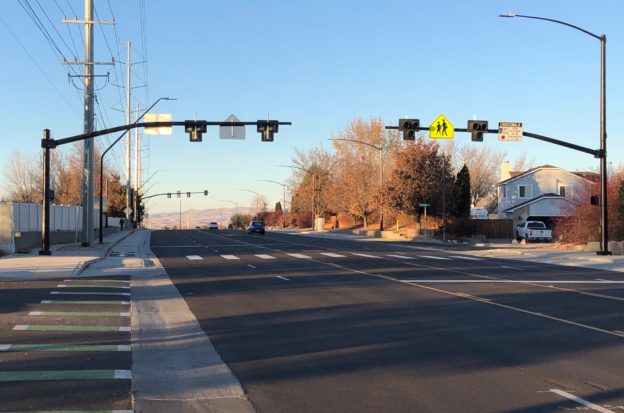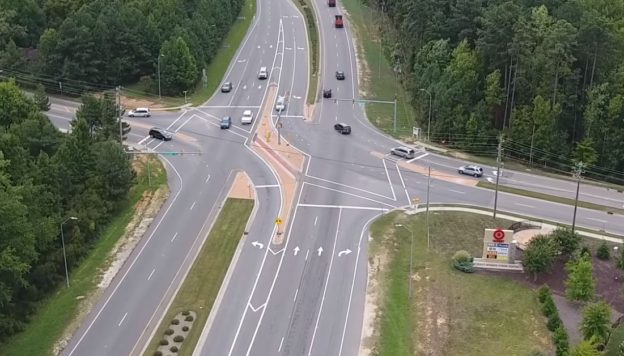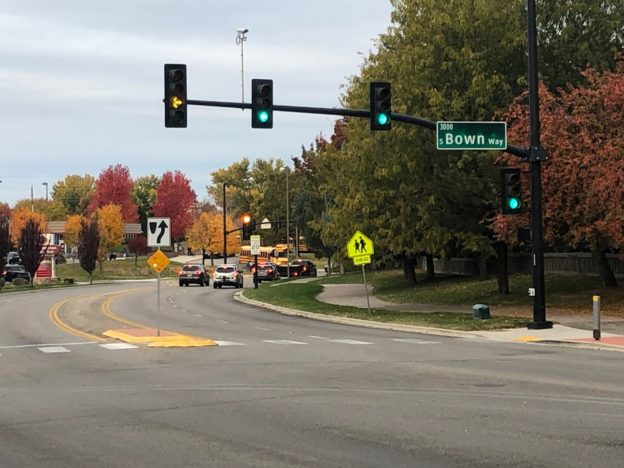by Don Kostelec
November 18, 2019
In June 2018, a traffic crash on I-84 in Boise resulted in the death of four people and a fire that damaged the Cloverdale Road overpass to the point it had to rebuilt. The old structure was a two-lane overpass with no sidewalks.
The Idaho Transportation Department and Ada County Highway District (ACHD) quickly put a design contract into action and rebuilt the bridge in a year’s time. The new bridge and the adjoining sections of Cloverdale Road now include 5 motor vehicle lanes, a raised bike lane on a portion of the road, and completed sidewalks on both sides.
Prior to the bridge rebuild, the one-mile section of Cloverdale between Overland and Franklin was mostly a three-lane section with sidewalks leading up to the old overpass. There was a traffic signal at the intersection with Emerson to help facilitate the movement of pedestrians to Spalding Elementary School and Sycamore Park.
The completion of a sidewalk network and construction of raised bike lanes (not fully protected, however; they are on what ACHD calls “mountable” curb or rolled curb) is normally a reason to celebrate in the world of active transportation advocacy.
But this project is having the opposite effect. It shows how it takes much more than the construction of a sidewalk and a bike lane to make a Complete Streets all users feel safe traveling upon and across.
Continue reading


